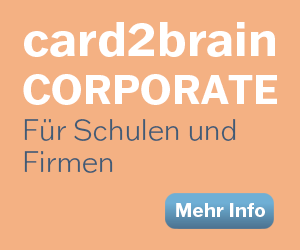Understanding Windows Vista & 7 boot process
Understanding the windows boot process.
Understanding the windows boot process.
Kartei Details
| Karten | 13 |
|---|---|
| Sprache | English |
| Kategorie | Technik |
| Stufe | Andere |
| Erstellt / Aktualisiert | 14.09.2013 / 14.09.2013 |
| Lizenzierung | Kein Urheberrechtsschutz (CC0) |
| Weblink |
https://card2brain.ch/box/understanding_windows_vista_7_boot_process
|
| Einbinden |
<iframe src="https://card2brain.ch/box/understanding_windows_vista_7_boot_process/embed" width="780" height="150" scrolling="no" frameborder="0"></iframe>
|
What is the normal startup process for a Windows 7 system: Name all 6 Phases in order.
1. Power on Self Test (POST) phase.
2. Initial Startup phase.
3. Windows Boot Manager phase.
4. Windows Boot Loader phase.
5. Kernel Loading phase.
6. Logon phase.
Describe: Power-on Self Test Phase
1. Performs initial hardware checks, such as determining the amount of memory present
2. Verifies that the devices needed to start an operating system, such as a hard disk, are present
- 3. Retrieves system configuration settings from nonvolatile memory, which is located on
the motherboard
Power-on Self Test Phase: What happens after POST and Troubleshooting.
After the motherboard POST completes, add-on adapters that have their own firmware
(for example, video and hard drive controllers) carry out internal diagnostic tests.
If startup fails before or during POST, your computer is experiencing a hardware failure.
Generally, the BIOS or EFI displays an error message that indicates the nature of the problem.
If video is not functioning correctly, the BIOS or EFI usually indicates the nature of the failure
with a series of beeps.
Initial Startup Phase: Describe the Process PT.1.
After the POST, the settings that are stored in the nonvolatile memory, such as boot order,
determine the devices that the computer can use to start an operating system. In addition to
floppy disks or hard disks attached to Advanced Technology Attachment (ATA), Serial ATA,
and small computer system interface (SCSI) controllers, computers can typically start an operating system from other devices, such as the following:
CDs or DVDs
Network adapters
Universal serial bus (USB) flash drives
Removable disks
Secondary storage devices installed in docking stations for portable computers.
Initial Startup Phase: Describe the Process Pt.2
When booting from the hard disk or any medium, the computer reads the boot code instructions located on the MBR. The MBR is the first sector of data on the startup hard disk. The MBR contains instructions (called boot code) and a table (called a partition table) that identify primary and extended partitions. The BIOS reads the MBR into memory and transfers control to the code in the MBR. The computer then searches the partition table for the active partition, also known as a bootable partition. The first sector of the active partition contains boot code that enables the computer to do the following:
- Read the contents of the file system used.
- Locate and start a 16-bit stub program (Bootmgr) in the root directory of the boot volume.
- This stub program switches the processor into32-or 64-bit Protected mode and loads the32-or 64-bit Windows Boot Manager,which is stored in the same Bootmgr file.
- After the Windows Boot Manager loads, startup is identical for both BIOS and EFI computers.
Initial Startup Phase for EFI Computers: Describe the Process.
Startup for EFI computers initially differs from startup for BIOS computers. EFI computers
have a built-in boot manager that enables the computer’s hardware to choose from multiple
operating systems based on user input. When you install Windows 7 on an EFI computer,
Windows adds a single entry to the EFI boot manager with the title Windows Boot Manager.
This entry points to the \Efi\Microsoft\Boot\Bootmgfw.efi 32-bit or 64-bit EFI executable program—the Windows Boot Manager. This is the same Windows Boot Manager that is eventually loaded on BIOS-based
computers. Windows configures the EFI boot
manager to display the EFI startup menu for
only 2 seconds and then load the Windows Boot
Manager by default to minimize complexity and
startup time.
If you install a different operating system or manually change the EFI boot manager settings,
EFI might no longer load the Windows Boot Manager.
Windows Boot Manager Phase: Describe the Process.
The Windows Boot Manager is capable of natively reading supported file systems, and it uses that capability to parse the BCD registry file without fully loading the file system.
For computers that have a single operating system, Windows Boot Manager never displays
a user interface. It does, however, wait for a few moments to allow the user to press a key to
display the standard boot menu, as shown in Figure 29-3, or to press F8 to choose Advanced
Boot Options. If the user does not press a key within a few seconds of POST completing, Windows Boot Manager starts the Windows Boot Loader, which in turn starts Windows 7.
Describe: Boot Configuration Data
The BCD is stored in a data file that uses the same format as the registry and is located on either the Extensible Firmware Interface (EFI) system partition (for computers that support EFI)
or on the system volume. On BIOS-based operating systems, the BCD registry file is located
at \Boot\Bcd on the active partition. On EFI-based operating systems, the BCD registry file is
located in the \EFI\Microsoft\Boot\ folder on the EFI system partition.
The BCD registry file can contain the following types of information:
1. Entries that describe Windows Boot Manager (\Bootmgr) settings.
2. Entries to start the Windows Boot Loader (\Windows\System32\WinLoad.exe), which can then load Windows Vista.
3.Entries to start Windows Resume Application (\Windows\System32\WinResume.exe), which can then restore Windows Vista from hibernation.
4. Entries to start Windows Memory Diagnostic (\Boot\MemTest.exe)
5. Entries to start Ntldr to load previous versions of Windows.
6. Entries to load and execute a Volume Boot Record, which typically starts a non-Microsoft boot loader.
Note: Additionally, you can add more entries to load custom applications, such as recovery tools.






